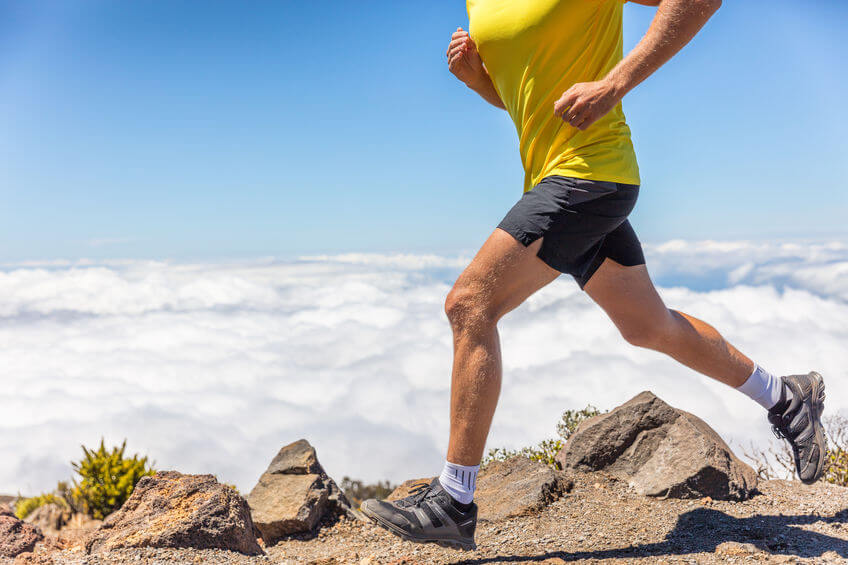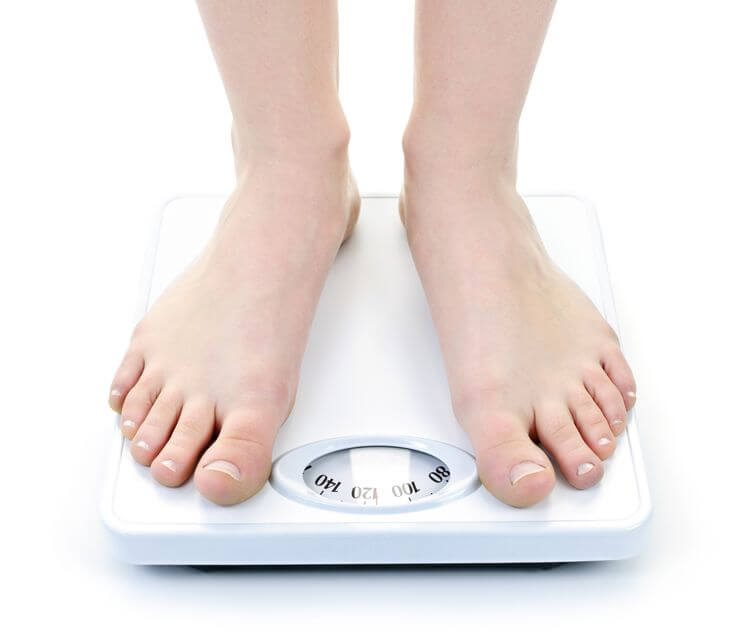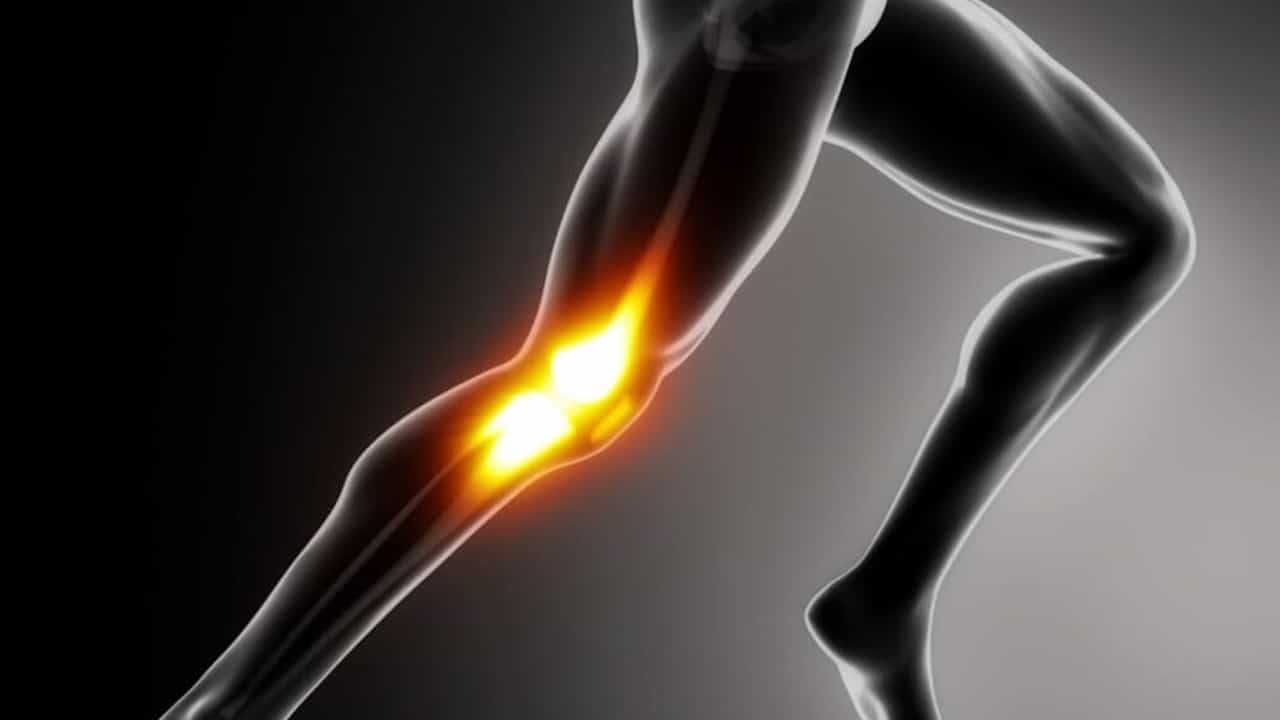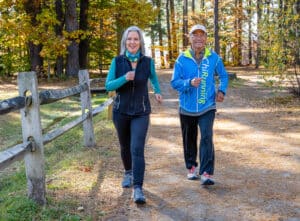At a ChiRunning Workshop in Orlando, FL a few years back, one of the attendees was the head trainer for the Tampa Bay Buccaneers football team. As you might guess he’s used to seeing a lot of bad knees (it comes with the territory). After the workshop, he came up and introduced himself, and one of the first things that came out of his mouth was, “I’m amazed… you have the knees of an 18-year-old!”
It made me feel pretty good because he had naturally assumed that I should have bad knees from all the running I had done. After all, at that point in my life, I was approaching the milestone of having run one hundred thousand miles in my 50 years of running and 65 years of living. I told him that having “young” knees wasn’t always the case with me. In my “pre-ChiRunning” days I had two nagging knee injuries that just wouldn’t go away: medial meniscus inflammation that came from splaying my feet, and lateral knee pain in my IT Band from running with bowed legs¹. I was okay as long as I didn’t run more than ten miles. But any longer distances would leave me a hobbling wretch for a couple of days afterward.
Through my study of T’ai Chi, and during the development of ChiRunning, I realized that if I changed how I aligned my body and changed some of my poor biomechanical habits, I could actually get rid of my knee pain permanently. It took me 3 ½ years to get rid of my foot splay (by strengthening my adductors) and correct my bowed legs (with ChiRunning Body Looseners). I can now report that I haven’t had any knee pain in over twenty-five years. That’s a LOT of pain-free miles!
The New York Times article, Running May be Good for your Knees² reports on a recent study showing how running can help keep an optimum balance of fluids in your knees, ensuring just the right amount of cushioning and range of motion. They conclude:
“But even with these limitations, the findings suggest that moderate amounts of running are ‘not likely to harm healthy knees and probably offer protection’ against joint damage,” Dr. Hyldahl suggests.
While the vast majority of runners run 5Ks and 10Ks, many ChiRunners are happy successful marathoners and ultra-marathoners. This kind of distance, of course, is all predicated on running with a low-impact technique and “making friends” with the impact of the oncoming road, with healthy pelvic rotation and landing with a midfoot strike on a knee that is slightly bent.
In another example³, five experts weigh in on how running can actually be good for your knees. The cautionary note that some of these docs give to those worried about damage to their knees is that if you are already experiencing symptoms of osteoarthritis or osteoporosis, you should be very careful to make sure any pain you experience is not increasing.
That’s the same advice we give to runners. Body Sense what you’re doing and discern whether or not you’re moving in a way that is helping or harming your knees. If you’re constantly working on reducing your impact as you run, you’re on the right path. If you’re concerned about whether or not your technique is doing you harm I suggest learning the ChiRunning technique and also running on dirt paths whenever possible.
Choosing the correct shoes has a significant impact on keeping your knees happy as a runner. In recent years the popularity of minimal drop (4mm) or zero-drop shoes has been helping runners to avoid the increased impact created by shoes with too much heel thickness. When the heels of your shoes are too high, you actually hit the ground sooner and with more impact than if you have shoes with less of a heel.
My case is only one of the countless cases of knee pain reversals created by ChiRunning. Since knee injuries perennially occupy the top of the all-time list of running injuries, I’d like to spread the word that running (correctly) is actually good for your knees. Here are five ways ChiRunning and ChiWalking will keep your knees healthy:
- Lowers your impact
Proper, low-impact running can keep your knees healthy well into your 70’s, and beyond. In ChiRunning and ChiWalking workshops we teach active people how to land more softly with every footfall. Many people overstride and strike the ground hard with their heels, which have no ability to absorb shock. ChiRunning and ChiWalking are both based on keeping your knees bent as they swing forward, which not only reduces shock to your knees as you land but allows your stride to open up rearwards, as it should. This reduces the amount of “deceleration” or braking that occurs when you over-stride.

- Keeps you moving
Because ChiRunning and ChiWalking are designed around low-impact, both techniques keep your knees bending and moving, which keeps just the right amount of synovial fluid in your knees… not too much, which restricts your knee’s range of motion, or too little, leaving you with bone-on-bone. Ouch!

- Strengthens your bones
The consistent gentle impact of ChiRunning and ChiWalking helps to strengthen your bones and joints and can stave off osteoporosis and osteoarthritis. If you are genetically predisposed to osteoarthritis you might get it anyway. But, there have been many scientific studies showing that running itself does not cause arthritis. Quite the opposite… as long as you’re running without a lot of impact.

- Helps maintain a healthy BMI
Being overweight is widely known to be hard on your knees. But having a consistent ChiRunning or ChiWalking practice can help you maintain a healthy BMI (Body Mass Index) as you age. Even if you’re just starting a weight-loss journey, you can still run light on your feet– it’s all in the technique!

- Builds healthy movement habits
Approaching your running or walking as a mindful practice (as ChiRunning and ChiWalking do) helps build good habits around exercise and movement, increasing your likelihood to continue moving gracefully as you age… with less likelihood of harming those precious knees along the way. Since the biggest culprit to bad knees is overstriding, we show runners and walkers how to reduce the length of their forward stride while increasing their stride as their legs swing rearward. This significantly reduces the amount of impact as your feet hit the ground. We are also huge proponents of NOT landing on your heels, where there is little to no shock absorption as you hit the road.

As it turns out, it’s not running that hurts your knees, but the way you run that does the damage. Our goal is to help anyone who wants to have healthy knees, to be able to run for as long as they have the desire.
¹The Noyes Knee Institute, “Bowed Legs,” 2019, https://noyeskneeinstitute.com/specialties-and-programs/bowed-legs/.
²Gretchen Reynolds, “How Exercise Affects Our Memory,” NY Times (blog), May 1, 2019, https://www.nytimes.com/2019/05/01/well/move/how-exercise-affects-our-memory.html.
³Lauren Cox, “5 Experts Answer: Is Running Bad for Your Knees?” Live Science (blog), May 30, 2013, https://www.livescience.com/36241-5-experts-answer-running-bad-knees.html.





